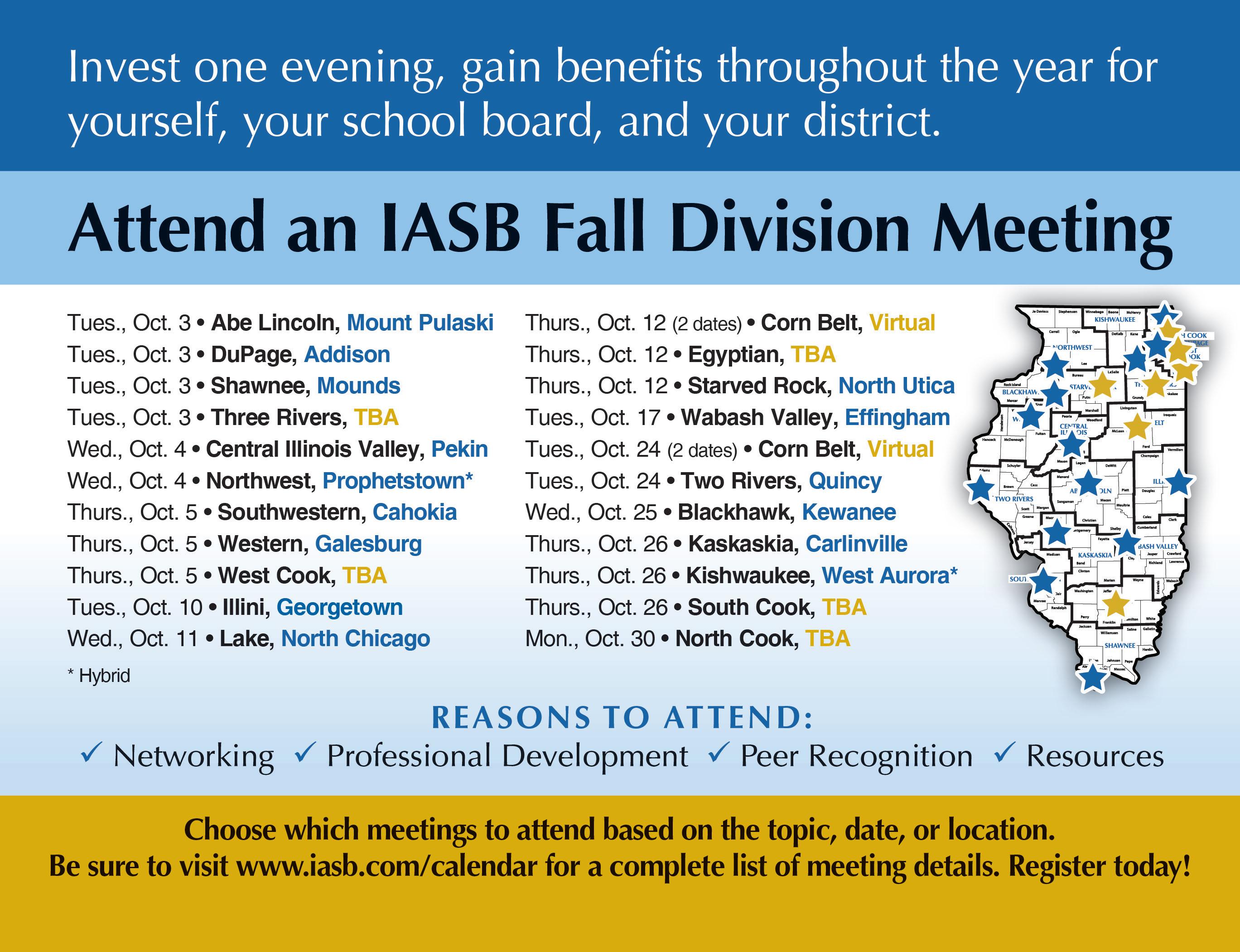




TTwenty-nine years ago, in the midst of the national attention paid to the documentary “Supersize Me” and local attention on junk food bans, the Illinois School Board Journal and other IASB publications produced a series called “Weighing Healthier Options,” introducing the topic of childhood obesity and what school districts were doing to address the concerns. School districts were responding to legislation passed requiring the implementation of wellness policies and reviews of the nutritional value of school-provided meals.
Ten years later, the topic was revisited in the Journal in light of new laws and new attention paid to hunger in society, especially among children. The Journal reported that 70,000 children were “going to bed hungry” in Illinois, and discussed the demands placed on schools as a part of the social safety net addressing hunger and food insecurity.
We revisit that revisit with this issue of the Journal. Although the focus can change, topics surrounding food, nutrition, healthy options, and paying for it all remain constant in Illinois and throughout the nation. Such issues were brought to the forefront during the height of the coronavirus pandemic, when schools and communities juggled, transformed, and invented creative measures to feed children, who
would otherwise have benefited from school meals, during the lockdowns and school facility closures. For many kids, schools are the primary, and sometimes only, source of food. Boards of education, charged with setting the goals and direction of the district, recognize this and understand that healthy children learn better. This Journal offers some current, foundational information for school board members to consider as they discuss food service, nutrition education, and other health-related topics.
Obviously, the school board isn’t going to show up in the kitchen next Monday to help out. Even if you’re trained as a food handler, it would be entirely against the letter and spirit of your governance role. We know that Journal readers come from different points of view and different levels of experience. And we like to offer insights into current topics, news, and challenges affecting school boards.
In case you missed it, an additional resource for those interested in hearing more on the topics of food, education, and food education, is a webinar presented in June by the Consortium of State School Boards Associations and its Urban Boards Alliance. “Food Insecurity and Public Education” was moderated
by Ronaldo Gomez, Director of Business Development for Sodexo, and featured panelists Robert S. Harvey, D.Min., President of Foodcorps; Geeta Maker-Clark, M.D., Director of Integrative Nutrition and Advocacy, and Director of Culinary Medicine at the University of Chicago; Topaz Arthur, National Manager for Education and School Foods with No Kid Hungry; and Roxanne Moore, Executive Director of the Sodexo Stop Hunger Foundation. They shared insights into the impacts of food insecurity on families and steps districts can take to assist families in their communities. Their perspectives offer an excellent immersion into the topic that I think school board members find value in. The webinar is available at COSSBA.org, at no cost to COSSBA members for on-demand viewing. We also take a few pages of this issue to welcome the new Executive Director of the Illinois Association of School Boards. Thanks to Kimberly Small, J.D., for sharing her thoughts in the Journal, starting on page 11, as she leads the Association into its next chapter.
Theresa Kelly Gegen is Director of Communications/Editorial Services at IASB and Editor of the Illinois School Board Journal and can be reached at tgegen@iasb.com.11 Q&A with Kimberly Small, IASB’s New Executive Director
By Theresa Kelly GegenDiscover what’s next for the Association under the leadership of new Executive Director Kimberly Small,
17 Food Security: Local Responses to a Global Concern
By Theresa Kelly Gegen J.D.According the United Nations, there are four dimensions to food security: access, availability, utilization, and stability. Discover what this means for communities seeking to reduce the impacts of food instability.
19 SDOH, Children, and Food
Social determinants of health (SDOH) are the conditions in the environments where people are born, live, learn, work, play, worship, and age.
23 School Nutrition Survey Identifies Challenges
By the School Nutrition AssociationThe 2022 survey aimed to identify the most salient current challenges facing school nutrition programs.
26 Overview:
The National School Lunch Program

By the U.S. Department of Agriculture Food and Nutrition Service Learn the basics of the federal meals program.
Policy Manual
28 In Case You Missed It (ICYMI) Relationships, Pathways and Internship Program Lead to Student Success
34 Milestones
35 Insights
Kara Kienzler, Associate Executive Director
Theresa Kelly Gegen, Editor
Bridget Kusturin, Advertising Manager
Jennifer Nelson, Copy Editor
Katie Grant, Design and Production
Jeff Armbruster, Typesetting
ILLINOIS SCHOOL BOARD JOURNAL (ISSN-0019-221X) is published every other month by the Illinois Association of School Boards, 2921 Baker Drive, Springfield, Illinois 62703-5929 (217) 5289688. The IASB regional office is located at One Imperial Place, 1 East 22nd Street, Lombard, Illinois 60148-6120 (630) 629-3776.
The JOURNAL is supported by the dues of school boards holding active membership in the Illinois Association of School Boards. Copies are mailed to all school board members and the superintendent in each IASB member school district.
Non-member subscription rate: Domestic $20 per year. Foreign (including Canada and Mexico) $25 per year.
Publication Policy
IASB believes that the domestic process functions best through frank and open discussion. Material published in the JOURNAL, therefore, often presents divergent and controversial points of view which do not necessarily represent the views or policies of IASB.
Copyright © 2023 by the Illinois Association of School Boards (IASB), the JOURNAL is published six times a year and is distributed to its members and subscribers. Copyright in this publication, including all articles and editorial information contained in it is exclusively owned by IASB, and IASB reserves all rights to such information. IASB is a tax-exempt corporation organized in accordance with section 501(c)(3) of the Internal Revenue Code.
TThere are many reasons why people are drawn to school board service. Giving back to their communities, a service orientation, and wanting to be more involved in the schools their children attend are reasons I hear most frequently.
May I suggest another reason? There is something about the world of school that intrigues them. If there wasn’t that something, people would be volunteering their time for an entirely different worthy cause.
What is it about school that is so intriguing?
It is the promise of something new.
That new thing could be a fact, a friendship, a future path. But it’s the allure of something to add to your brain’s collection. One of the sad things about adulthood is that adults are not routinely in an environment where the expectation is that you don’t know, that mistakes are welcome, and that there are people there to guide you.
Let’s take that element of the world of school — a place where you learn new things — and apply it now. Board members are models of behavior, especially of lifelong learning. There is a lot to learn when you first become a board member — newly elected board
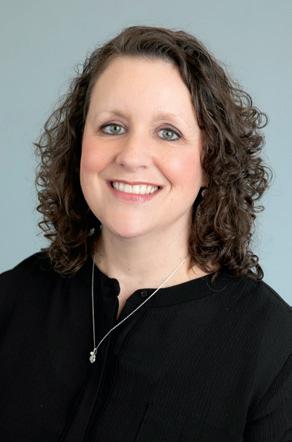
members, am I right? Actually, there is a lot to learn all the time as a board member: Trends in education, new laws, technology, and your new governance team’s dynamics. IASB offers events and resources to help you learn about these things: The Joint Annual Conference, Division Meetings, webinars, in-district workshops, books and articles, online courses, and more — many avenues to satisfy that kind of learning.
I’m not suggesting that school board learning isn’t fun, but let’s also consider learning for the fun of it, for the sake of getting a new wrinkle in your brain. Is there anything you’ve always wanted to try? I always wanted to learn how to play the violin, and I took violin lessons last year. It was a lot harder than I thought it would be, and I struggled with holding the bow, and where the notes were on the strings. The layout was different — I was used to the clarinet. But I tried it, and now I know a little more about it.
It’s important to learn things for the fun of it as well as learn new things because it will make you better at your job (board member and otherwise). Learning new things makes you more interesting. If you are trying to learn a new
skill, even if you are not good at it, you are better able to understand, empathize, and connect with students who are struggling.
Keeping an open mind about learning new things is crucial — learning without judging. Learning feeds your brain. It provides new stimulation. It keeps you healthy, as eating nutritious food keeps you healthy. You provide fuel for your brain by learning. Of course, there are “junk food” equivalents to what you put in your brain. Reality TV is one that comes to mind, and like all things that’s ok, in moderation.
But I challenge you to challenge yourself to learn, not just information, but skills, or ways of thinking. Consider Howard Gardner’s Theory on Multiple Intelligences, and explore visual-spatial, linguistic-verbal, logical-mathematical, body-kinesthetic, musical, interpersonal, intrapersonal, and naturalistic topics.
Feed your brain. Demonstrate lifelong learning. Remember that there is a student inside of you that still wants to learn.
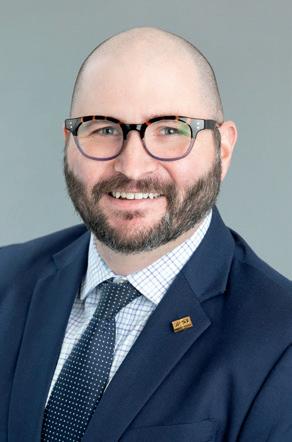 By Zach Messersmith
By Zach Messersmith
BBy the time you are reading this, I will no longer be an employee of the Illinois Association of School Boards. I spent nearly 11 years working in the Government Relations department advocating, negotiating, problem-solving, and representing the members of IASB. While my current time at IASB has ended, the lessons I learned from the Association remain with me.

One of the first things I received as an employee of the Illinois Association of School Boards was also one of the most valuable. It wasn’t an explanation of benefits or a Human Resources manual, although those would come later. It was the “Blue Badge Speech.”
The Blue Badge Speech was given to me by Associate Executive Director for Board Development Dean Langdon, who recently retired from IASB. While I do not remember the Blue Badge Speech verbatim, I do remember the intent. The idea behind the speech was that when you put on the IASB employee name badge it means that you are trustworthy, that you give your all, and that you will serve those around you. The power in the Blue Badge Speech comes from the values we see reflected in our membership.
A few years ago, I came to a shocking revelation. Dean Langdon
did not remember giving me the speech. I was certain it was something momentous and consequential, a speech everyone received upon putting on the blue badge for the first time. I even gave a few new hires a Blue Badge Speech because its lessons were so impactful on me. In hindsight, the power of the speech came from the sincerity of the delivery and not because it was a requirement.
With the updated Association logo that was released in July came many revamped and redesigned items. IASB staff members have new letterheads, new business cards, and of course new badges. While those new name tags are no longer as blue, what the badge stands for remains unchanged.
Trustworthiness is key to being impactful in the Capitol. Everyone under the dome would tell you some version of “your word is your bond” or “your word is all you have.” While I agree with those sentiments, there are people in the Capitol with large political war-chests that have a little more flexibility on trustworthiness than IASB does. Being trustworthy also means you must know what you are talking about. We have all lamented the size of the Illinois School Code and the number of bills introduced. I have done so in past issues of the Journal.
However, the practical impact of the number of new bills and laws is that IASB staff must have a wide variety of knowledge on issues related to school districts. Government Relations staff must possess a working knowledge of various areas, including education, employment, environmental concerns, transportation, insurance, and more. With the number of areas covered, relationships with individuals in those fields become vitally important as well. If your board of education has participated in a “Trust Edge” workshop provided by IASB, you understand the principle that “everything of value is built on trust.”
In the Capitol, IASB has not always had the most money or the influence that goes along with that political support, but we have never been short on trustworthiness. To maintain this knowledge and the trustworthiness that goes along with it, it is vital that IASB continues to engage membership throughout the year by meeting with districts and divisions and providing vital support to the Resolution process.
Giving your all means there are no “normal” hours or “typical” days. Giving your all does not mean you have no boundaries or are unwilling to share the workload, but what it does mean is that you are willing to answer the call when the time comes. One example of this that stands out to me is from January this year. The Illinois General Assembly was meeting in a lame-duck session. At about 10 p.m. an amendment was filed to mandate sex ed in grades K-12. IASB members have clearly expressed their views on mandated curriculum through the Resolutions Process. While the bill was moved out of committee that night, IASB staff was there representing our members’ interests. We were also there working on behalf of the membership in the following days — and the bill was never called for a vote. IASB staff must be ready to answer the call at any time because that is what IASB members do. Being a school board member is not a 9 to 5 service and representing school board members is not one either. Achieving success in the State House or the schoolhouse requires putting in the work.
Lastly, putting on the Blue Badge means you serve those around you. We know the hard work and dedication our members demonstrate for their students and their communities. At IASB, we strive to reflect that in the work we do on behalf of you, our members. School board members are vital public servants that deserve quality representation in the Capitol. Whether it is working to reform school funding or preserve local control, IASB has the most success when it works with interested partners to improve public education for all. A single school board member cannot make changes on their own and IASB must collaborate to achieve success in the Capitol.
While the chapter of my career at IASB is ending, the lessons from the Blue Badge Speech will go with me. School board members by and large are wonderful people who are serving for the right reasons. It has been a pleasure to wear the Blue Badge and represent you.
Zach Messersmith worked for the Illinois Association of School Boards for over 10 years, lately as Director of Governmental Relations. His next badge will be purple and gold as he has joined Western Illinois University as Director of Governmental Relations.
As of August 15, 2023
PRESIDENT
Simon Kampwerth Jr.
VICE PRESIDENT
Mark Harms
IMMEDIATE PAST PRESIDENT
omas Neeley
TREASURER
Tim Custis
ABE LINCOLN
Christopher Gordon
BLACKHAWK
Je Johnson
CENTRAL ILLINOIS VALLEY
Tim Custis
CORN BELT
Nick Sartoris
DUPAGE
omas Ruggio
EGYPTIAN
Lisa Irvin
ILLINI
Kimberly KenileyAshbrook
KASKASKIA
Linda Eades
KISHWAUKEE
Robert Geddeis
LAKE
Marc Tepper
NORTH COOK
Alva Kreutzer
NORTHWEST
Chris Buikema
SHAWNEE
Sheila Nelson
SOUTH COOK
Joyce Dickerson
SOUTHWESTERN
Mark Christ
STARVED ROCK
Jim McCabe
THREE RIVERS
Liz Campbell
TWO RIVERS
Tracie Sayre
WABASH VALLEY
Mandy Rieman
WEST COOK
Janice Roeder
WESTERN
Sue McCance
SERVICE
ASSOCIATES
Mark Jolicoeur
The vision of the Illinois Association of School Boards is excellence in local school board governance supporting quality public education.
The mission of the Illinois Association of School Boards is to Light the Way for its members by developing their competence and confidence through a robust toolkit designed to build excellence in local school board governance, including
• Premier training experiences;
• Networking opportunities for mutual support;
• Valuable benefits, pooled services, information, and expertise;
• Advocacy on behalf of public education; and
• A platform for a strong collective voice on common interests and concerns.
TThe School Board is legally responsible for developing and maintaining a comprehensive board policy manual. In fact, adopting up-to-date, customized policies is one of the most important duties of a school board. It is through policy that the board establishes and communicates its priorities, expectations, and direction for the district. While legal compliance is certainly a vital component of the manual, there are numerous opportunities for each board to consider what policy language is right for its local district.
A subscription to PRESS, IASB’s policy and procedure information and updating service, provides boards with access to the Policy Reference Manual, which contains approximately 185 sample policies. However, when using these samples as the basis for the local board policy manual, adopted policies at one district will not be identical to those found in the manual at the district down the road, over the river, or across the interstate.
The PRESS sample policies contain many footnotes that provide important information about policy requirements, legal citations, background information,

when to contact the board attorney, and other helpful resources. There are hundreds of options and alternates found in the footnotes for the board to consider. Using the information in these footnotes to appropriately customize the board’s policies will ensure that an elementary board’s manual does not look the same as a high school or unit board’s manual, and a small, single-building district does not contain the same language as that of a large, multi-building district. Of course, the differences only begin there. Each individual community’s values, and each board’s goals, will be clear in a fully customized board policy manual.
Starting with the first section, the first footnote found in sample policy 1:30, School District Philosophy, contains clear direction for boards to replace the text in the sample policy with the district’s mission, vision, and/or belief statement. Other customizations found in Section 1 include the grade levels served by the district, what joint programs and intergovernmental agreements the district participates in, and other
information about how the district operates.
Section 2 is all about how the school board operates, and there are many opportunities for customization to be found here. In sample policy 2:40, Board Member Qualifications, for example, a board may choose to specify that it will appoint a student member to serve in an advisory capacity. Any specific residency requirements for board members might also be found here if board members are not elected at large in the district. Other examples of customization include whether or not the board uses a consent agenda, guidelines for public participation at board meetings, and how the board administers the oath of office, fills vacancies, prepares agendas, and votes.
One of the smallest sections of the board policy manual, Section 3 covers goals for the administration’s implementation of a quality educational program. Sample policy 3:10, Goals and Objectives, should be customized with the board’s goals and objectives for
school administration in alignment with the mission and vision included in policy 1:30.
Section 4 covers operational topics, such as district finances, identity protection, transportation, food services, safety, and security. The board has more than 60 opportunities for customization in this section. For example, in sample policy 4:55, Use of Credit and Procurement Cards, each board will specify whether these cards are issued by the district, and if so, specifics regarding card use should be customized.
The personnel section is further divided into three categories: General Personnel, Professional Personnel, and Educational Support Personnel. The policies found here will be heavily affected by whether or not the topics covered are also included in district collective bargaining agreements. Examples of additional customization in this section include the particular 12-month period chosen by the district to define when the 12-week FMLA entitlement occurs, whether or not the district provides compensatory time-off, and local specifics regarding sick days, vacation, and other leaves.
In Section 6, the board will first customize sample policy 6:10, Educational Philosophy and Objectives, in alignment with the mission and vision included in policy 1:30. This will allow the board to monitor whether the educational program is making progress toward its student
As of August 15, 2023
OFFICE OF THE EXECUTIVE DIRECTOR
Kimberly Small, Executive Director
Jeremy Du y, Deputy Executive Director/ General Counsel
Tulsi Srinivasan, HR Director
Chris Montrey, Admin. Assistant
ADMINISTRATIVE SERVICES
Jennifer Feld, Chief Financial O cer/Associate Executive Director
Karen Faith, Assistant Business Manager
Camille Gillette, Specialist III
Ruth Ann Ferris, Receptionist
Sally Kimmel, Receptionist
OFFICE OF GENERAL COUNSEL
Jeremy Du y, General Counsel/Deputy Executive Director
Maryam Brotine, Assistant General Counsel
Debra Jacobson, Assistant General Counsel
Ummehani Faizullabhoy, Assistant Director
Michael Ifkovits, Legal Assistant
Karis Li, Legal Assistant POLICY SERVICES
Angie Powell, Associate Executive Director
Nicholas Baumann, Director
John Fines, Director
Tammie Ng, Director
Breanna Rabacchi, Assistant Manager
Emily Tavernor, Assistant Manager
Tasha Levy, Admin. Assistant
Jennifer Robinson, Admin. Assistant
GOVERNMENTAL RELATIONS
W. Bryan Soady, Associate Executive Director
Mary Ellen Buch, Director
Barbara Hobrock, Director
Alie Wagner, Admin. Assistant
MEETINGS MANAGEMENT
Carla S. Bolt, Director
Natalie Duke, Assistant Director
BOARD DEVELOPMENT
Lori Grant, Associate Executive Director
Sandra Kwasa, Director
Kathryn Bulava, Assistant Director
Rhonda Cass Mackiney, Assistant Director
Haylie Noltensmeier, Admin. Assistant
Linda Zulaski, Admin. Assistant
EXECUTIVE SEARCHES
Patricia Sullivan-Viniard, Director
Tim Buss, Consultant
Jim Helton, Consultant
Dave Love, Consultant
Alan Molby, Consultant
Vic Zimmerman, Consultant
Mary Torgler, Admin. Assistant
INFORMATION TECHNOLOGY
Chris Lawton, Director
Patrick Shea, Assistant Manager
FIELD AND EQUITY SERVICES
Nakia Hall, Associate Executive Director
Reatha Owen, Senior Director
Patrick Allen, Director
Arlana Bedard, Director
Lori Grant, Director
Perry Hill IV, Director
Laura Martinez, Director
Natalie Williams-McMahon, Director
Yolanda Chavez, Admin. Assistant
Nancy Johnson, Admin. Assistant
Chelsea Reimann, Admin. Assistant
Cindy Rispens, Admin. Assistant
Shantel Rotherham, Admin. Assistant
Miranda Smith, Admin. Assistant
Gretchen Watson, Admin. Assistant
COMMUNICATIONS
Kara Kienzler, Associate Executive Director
eresa Kelly Gegen, Director
Heath Hendren, Director
Jennifer Nelson, Director
Isaac Warren, Assistant Director
Bridget Kusturin, Admin. Assistant
PRODUCTION SERVICES
Katie Grant, Director
Toby Chiles, Lead Print Shop Operator
Je Armbruster, Print Shop Operator/Graphics
Sta emails: First initial and last name preceding iasb.com
learning goals. The board will also set other goals in this section, such as for social and emotional learning, instructional materials, the library media program, and the guidance and counseling program.
Sample policy 6:60, Curriculum
Content, has more than 10 options for the board to consider, and sample policy 6:310, High School Credit for Non-District Experiences; Course Substitutions; Re-Entering Students, has more than 15 options that a board in a district with high school students may, or may not, choose to include. Each board will also consider whether to cover certain optional topics in the policy manual, such as a program for the gifted, a bring-your-own technology program, or recreational class trips.

Section 7 – Students
Tied with Section 6 as the largest section of the board’s policy manual, Section 7 covers a lot of ground. Which undesignated medications are available to students is one topic to be customized here; other decisions for the board in this section include whether non-public school students
transferring into the district, and whether and under what conditions the district will accept non-resident tuition students.
Section 8 – Community Relations
Sample policy 8:10, Connection with the Community, contains examples of objectives for the district’s public relations program,
Ensuring that the board policy manual consistently reflects these changes will help a board effectively govern its unique local district by written policy.
enrolled for part-time attendance are allowed to participate in extracurricular activities, certain parameters regarding students
which should be customized by each local board. The board should also discuss its community engagement process to determine the policy language appropriate to include. Examples of other topics covered in the community relations section are the board’s rules for community use of school facilities, advertising and distributing materials in schools, visitors to and conduct on school property, and gifts to the district.
The policymaking role of the board is continuous and ongoing. Times change, laws change, the board changes, and the community it represents changes over time. Ensuring that the board policy manual consistently reflects these changes will help a board effectively govern its unique local district by written policy.

IIn March 2023, Kimberly Small, J.D., was named by the Board of Directors as the next Executive Director of the Illinois Association of School Boards, and she assumed this role on July 1, 2023.
As Executive Director, Small is responsible for Association operations and will represent its positions in state and national public school policy management on behalf of 849 member districts and nearly 6,000 elected Illinois school board members. Small began her employment at IASB in 2005. During her tenure with the Association, she has been a Policy Consultant, Assistant General Counsel, General Counsel, and Associate Executive Director for Policy Services.
Small replaces Thomas E. Bertrand, Ph.D., who announced his departure from IASB last fall and is
now the Executive Director of the Consortium of State School Boards Associations (COSSBA).
Small is the eighth full-time Executive Director, and the first woman in the role, in the Association’s 110-year history. Here is the Journal ’s Q&A with IASB’s new Executive Director.
You have been with IASB for several years. How has the Association changed since you arrived?
The Association’s staff has been the biggest change since I arrived in 2005, especially over the past 5-7 years, which of course the pandemic accelerated. During my first years in the Association, I was just 30 years old, was “the new employee,” and was the youngest employee in the Lombard office by
about 15-20 years for several years! I’m going to be honest, there were many days that I was lonely for a peer who was my age, having come from a job where most people were closer to my age, but the staff at the Association then was — and now is — so supportive of where colleagues are walking in their lives that I found peers despite the age differences. Employee tenure was much longer in those days of the Association’s history. Now, the Association is moving through a transition with many of its employees preparing for retirement or retired, and other employees, as with everywhere in America right now, moving forward to other experiences that they want to have in their careers. For a long time, the Association had very little staff turnover, and now the Association is onboarding a lot of new staff members. Right now, the leadership team has five people who are either new to the Association or in new roles.
I enjoy music and played the piano for over 17 years along with the flute through middle and high school. I often come back to the thought of this time of transition for the Association in terms of music, where you hear the dissonance of a song and your ears want it to resolve — and when it does resolve and move forward, it’s

beautiful! Right now, the Association’s staff is experiencing that transition, and the changes are bringing in new perspectives to serve IASB members and help position the IASB for the future. I consider it a great privilege to walk together with staff and the members during this time of the Association’s history. We’ll move together and grow by supporting staff to find member-centered solutions that evolve for the Association members’ needs to govern effectively and provide a quality, public education to the almost two million students that they educate.
How will your experiences inform your leadership? What perspective does your role as an attorney bring to your leadership at IASB?
My upbringing and life experiences have instilled in me a strong sense of faith, resilience, and persistence, and that makes me a leader who reflects the values of integrity, compassion, and results. My experiences at the Asso-

My role as an attorney brings a different leadership perspective to leading IASB. During law school and early in my career, I always thought that I’d someday want to be a judge. While I chose a different path at IASB, the role of executive director certainly requires a lot of decision-making. Having the background as an attorney will certainly help me maintain objectivity and look at all sides of a situation when making decisions.
ciation will also inform my leadership because I’ve been asked to do many jobs that exist at the Association, so those experiences will inform my leadership in understanding the skills for the work that Association leadership asks its staff to perform for IASB members. I have shared with the Board of Directors and staff who I am and what I value, which will inform my leadership.
My experiences as IASB’s General Counsel help me understand every department’s work in serving the membership, and that gives me a head start as the next executive director in understanding what IASB departments do for the members, where their risks are, and how I can be of support to the leadership team at IASB. But it’s important to remember that I will not be practicing law anymore for
IASB — that’s for the new General Counsel to do! While I fully understand the legal risks facing the organization, the legislative process, and how new laws impact IASB’s members, the state and federal regulatory scene for IASB members and the Association, it’s important to remember that while those legal skills are transferable to the role of executive director, there are many other leadership lenses required to lead an organization. This is why I sought out an Executive Scholar Certificate in Nonprofit Management from Northwestern Kellogg School of Management. While I also have a dual undergraduate degree in Secondary Education and English, IASB is at its core a 501c3 not-forprofit corporation, not a school district, and I’m excited to take my education and experience into this new role to help support staff in serving IASB’s members.
Before the coronavirus pandemic, the focus was on the then-recently adopted Evidence-Based Funding
What I can predict is that our staff will be ready to serve IASB members to meet whatever challenges lie ahead.
Formula. What is your opinion of how that is playing out?
IASB said when Evidence-Based Funding (EBF) was passed and implemented in Illinois that the formula will work when it’s fully funded. The results of EBF have improved Tier 1 districts’ adequacy by about 2.4% per year since the law was implemented in FY18. Yet, IASB members need the General Assembly to continually and fully fund the formula for the students in Illinois, which requires attention to inflation and other rising costs for IASB members. Also important to remember is that when IASB members are required to implement unfunded mandates, their Evidence-Based Funding is
diminished by the costs of these unfunded mandates.
What will be the overreaching issues in Illinois public education that you anticipate over the next few years? How would you describe the challenges these issues present to boards of education? And how do you anticipate IASB will assist its members?

One thing that is constant is change and another constant is that we just cannot predict the future. When I think about Dr. Bertrand’s tenure, we knew a pandemic could happen someday, but we could have never predicted how the pandemic was layered with the Summer of 2020’s racial
reckoning, causing American school boards to reflect on their systems of education and the impact of them upon their students in the context of diversity, equity, and inclusion. So it’s difficult to predict what the challenges might be over the next few years. To remain as prepared as possible, we can set expectations for staff related to how we serve IASB members. What I can predict is that our staff will be ready to serve IASB members to meet whatever challenges lie ahead.
Right now, those challenges include, but are not limited to learning loss from the pandemic; unfunded mandate costs; full Evidence-Based Funding; equity, diversity, and inclusion; and conflict management. Conflict is a challenge in all areas and will not be going away. It’s important to remember that conflict can be healthy when we have the tools to understand it and listen to each other. Providing our members with tools to understand why it happens and how to diffuse it and move out of it will be important. Advocating for adequate and full funding in education will also be a constant for IASB.
How do you envision the Association moving forward, as you take over the Executive Director role?
There are a lot of things that we are unable to control in the education space and the world in general, so to the extent that I can provide staff and members consistency, I will do that when it serves IASB’s vision and mission for its members. We want high levels of
satisfaction with our mission’s programs and services. It’s important to remember that:
• IASB exists to serve members. The focus this year will be on staff showing gratitude toward members for the unpaid service they provide in their communities.
• Member satisfaction and engagement with IASB are vital to the financial health of the organization. Staff are working on a robust internal member engagement metric to help IASB evolve its programs and services and empower members and support them with their local needs.
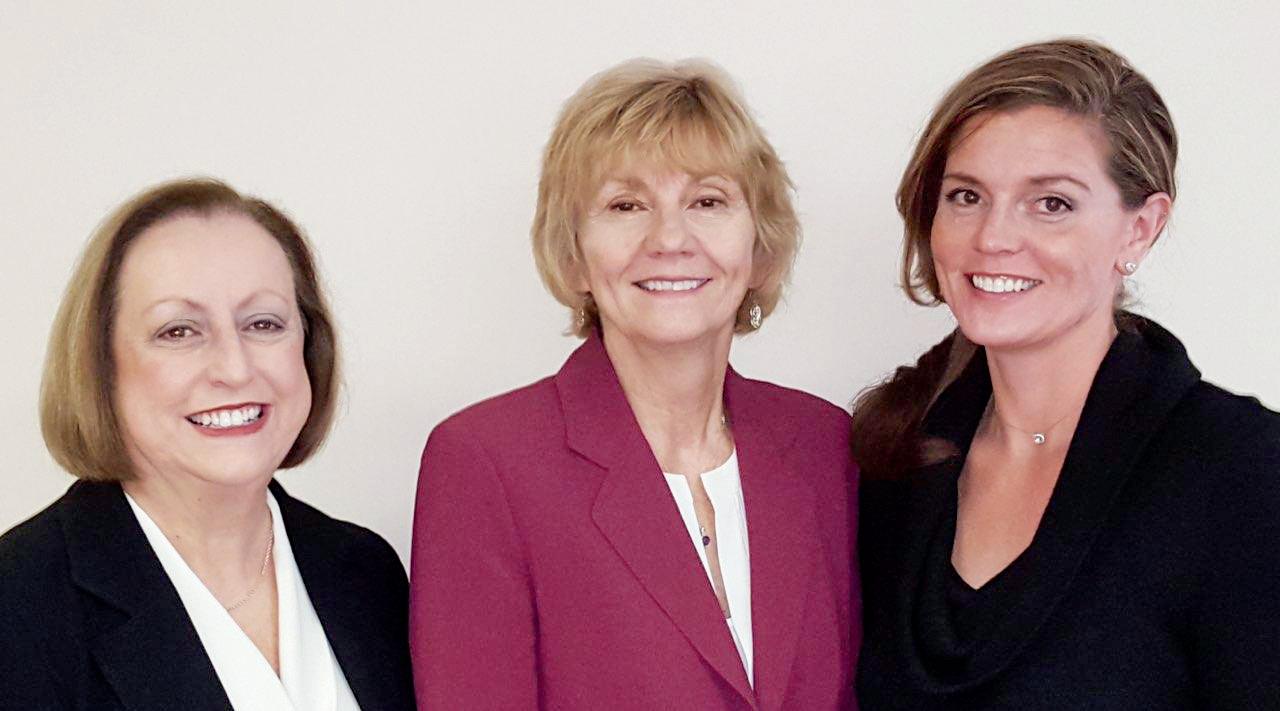
• Excellence in programs, services, and resources to membership ensures return on investment to districts.

Moving forward, the Association will continue its evolution to empower its members to advocate for public education in their communities. With member satisfaction and excellence, IASB will continue to work toward aligning department goals to its future strategic plans, re-invest in tech and infrastructure, and maintain the financial stability of the Association.
This fiscal year, 2023-2024, the Association will fulfill its 6E Strategic Plan and move forward with developing its next strategic plan for FY24-25. To do that, staff needs to continue to focus on IASB’s newly developed and implemented Core Values: To do our best our staff members must feel respected for their expertise and included in all spaces where they are needed to serve members. So, IASB’s diversity, equity, and inclusion work internally and externally must deepen at the Association. It will provide updated experiences for its board presidents and other targeted learning opportunities.
Members will see an enhanced Annual Conference this year with some new options for learning, and let’s not forget the refreshed IASB logo!
What insight or advice do you have to offer school board members?
You are taking unpaid time away from your paid work and precious time away from your families and friends to serve your local communities. The fact that you are a volunteer is often unknown or misunderstood, and IASB is here to support your work and show its gratitude to you for what you do in your communities for the students that your boards educate.
First, it’s important for newly elected school board members to finish their mandatory school board member training to be familiar with all of the areas that you are required to know as a board member. The best piece of advice I can give is to absorb the extraordinary amount of information that you’re expected to know as you take your seat on the school board. Always lean back on the Oath of Office when you face challenging situations.
From finishing mandated training, use IASB to build upon your knowledge. To do that, IASB can serve you with a vast number of professional development offerings for you as an individual board member seeking growth. Did you know that our Association has a library where you can check out books to help you understand your role as a board member and the K-12 education space? Have you checked out IASB’s Online Learning Center courses?
Use the Joint Annual Conference to network with fellow board members across the state and interact with the lawyers who represent school boards in Illinois. They’re present at the Conference to support your work and help you be the best board member that you can be for the students that you serve. No one knows what it’s like to serve, except your fellow school board members. It’s important to know that many school boards — even ones that are geographically diverse from each other — face the same challenges. Networking at this event helps provide boards with new perspectives to solve challenges.
My next piece of advice is to know that your board’s statutory duty in the School Code is to direct the superintendent through policy, so it’s vitally important for you to know and understand your school board’s policy manual. IASB Policy Directors can help you with that and make knowing your policies less daunting.
Next, it’s important to know the staff in IASB’s Field and Equity Services department to ensure your needs in the field are being met.
Once you know and understand your local school district’s needs and how your local policies are impacted by legislation, IASB can help empower you and your fellow board members to advocate for public education by speaking with the legislators that your community has elected to serve you.

Bottom line, IASB has vast resources and supports for you and your fellow board members that can help you make an impact in local school board governance for the students in which you serve.

EMBRACE THE NEXT CHAPTER OF YOUR CAREER BY EARNING A DEGREE DESIGNED TO HELP YOU LEAD THE WAY FORWARD IN EDUCATION.
With Bradley University’s online Doctor of Education in Educational Leadership Program, you can specialize your expertise by choosing from three concentrations:

• Higher Education Administration and Leadership: Prepare for new leadership roles in postsecondary teaching or administration
• PreK-12 Education Administration and Leadership: Gain the skills to pursue a career as a superintendent or district leader
• Educational Technology: Learn to create top-notch online education programming based in technology, instructional design, experiential learning, and more

Learn practical strategies taught by faculty with real-world experience
Graduate in as few as 2.6 years (8 semesters)
Complete coursework 100% online with no campus residency requirements
learn more
onlinedegrees.bradley.edu/ edd-doctor-of-education
Fto meet dietary needs for a produc tive and healthy life, according to USAID (the United States Agency for International Development).
There are four dimensions to food security, according to the Food and Agriculture Organization of the United Nations (FAO):
“Physical availability of food: Food availability addresses the

trade.
Economic and physical access to food: An adequate supply of food at the national or international level does not in itself guarantee household-level food security. Concerns about insufficient food access have resulted in a greater policy focus on incomes, expenditure,
tion is commonly understood as the way the body makes the most of various nutrients in the food. Sufficient energy and nutrient intake by individuals are the result of good care and feeding practices, food preparation, diversity of the diet, and intra-household distribution of food. Combined with good
biological utilization of food consumed, this determines the nutritional status of individuals.
Stability of the other three dimensions over time: Even if
What do you picture when you hear the phrase “food desert”?
The term “food desert” typically describes a geographic area in which access to affordable, healthy food
your food intake is adequate today, you are still considered to be food insecure if you have inadequate access to food on a periodic basis, risking a deterioration of your nutritional status. Adverse weather conditions, political instability, or economic factors (unemployment, rising food prices) may have an impact on your food security status.”
All must be present to achieve food security. Note that in some conversations, the dimensions are expanded to include agency and sustainability, along with availability, access, utilization, and stability.
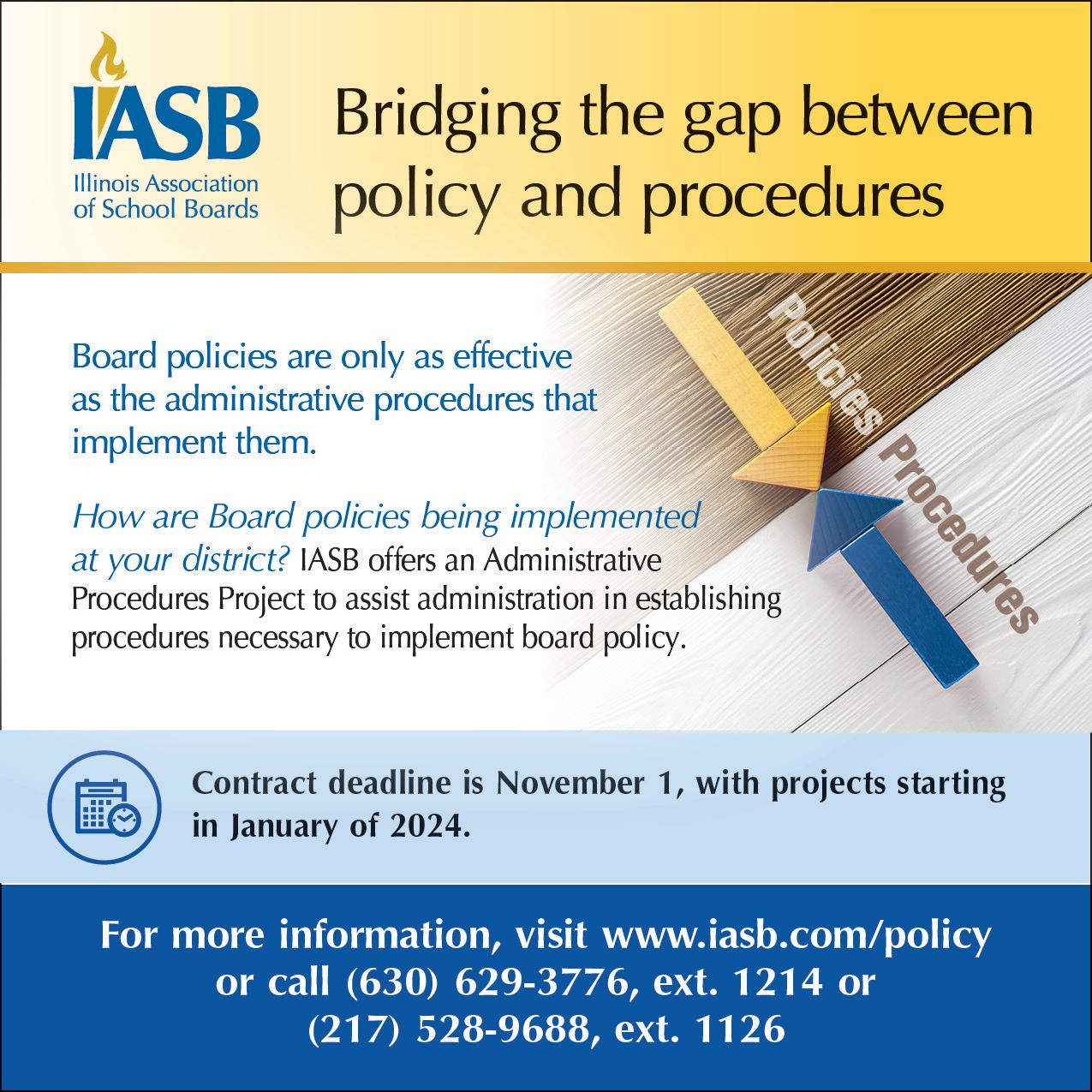
The U.S. Department of Agriculture defines food insecurity as “a lack of consistent access to enough food for every person in a household to live an active, healthy life.” Nine million children experience food insecurity in the United States. In the United States, the underlying causes of food insecurity include factors relevant to the dimensions: under- or un-employment, poverty, and inconsistent access to healthy food, and are interconnected.
options is restricted or nonexistent due to a lack of grocery stores, no grocery stores within convenient traveling distance, or both. The term originated in the 1990s and, although in common use, is increasingly considered misleading or unclear. For one thing, a desert is a
“natural occurring ecosystem,” but an area of lack of access to food is an entirely different brand of “eco” system — an economic one — that determines where people shop when they have the means to do so. This second-guessing of the terminology comes with reassessing the data about food insecurity. Studies in the U.S. have shown that “Geographic access to food was generally not associated with the percentage of households that were food insecure.” As much as it is a location issue, it’s also a poverty issue. That being said, in Illinois, the term “food desert” is codified in Illinois Public Act 1000493, as “a location vapid of fresh fruit, vegetables, and other healthful whole foods, in part
The U.S. Department of Agriculture defines food insecurity as “a lack of consistent access to enough food for every person in a household to live an active, healthy life.”
due to a lack of grocery stores, farmers’ markets, or healthy food providers.”
Areas with a lack of food access and affordability typically have small populations, lower levels of education, residents with lower incomes, and are areas with higher rates of unemployment. A 2021 report by the Annie E. Casey Foundation noted that such areas are identified by
• Lack of access to food, as measured by distance to a
store or by the number of stores in an area.
• Household resources, including family income or vehicle availability.
• Neighborhood resources, such as the average income of the neighborhood and the availability of public transportation. Thus areas with lack of food access can be — and are — urban, suburban, or rural. Federal assistance programs, such as the National School Lunch
Social determinants of health (SDOH) are the conditions in the environments where people are born, live, learn, work, play, worship, and age that affect a wide range of health, functioning, and quality-of-life outcomes and risks. SDOH can be grouped into five domains:
• Economic Stability
• Education Access and Quality
• Health Care Access and Quality
• Neighborhood and Built Environment
• Social and Community Context
Social determinants of health (SDOH) have a major impact on people’s health, well-being, and quality of life. Examples of SDOH include:
• Safe housing, transportation, and neighborhoods
• Racism, discrimination, and violence
• Education, job opportunities, and income
• Access to nutritious foods and physical activity opportunities
• Polluted air and water
• Language and literacy skills
SDOH contribute to wide health disparities and inequities. For example, people who don’t have access to grocery stores with healthy foods are less likely to have good nutrition. That raises their risk of health conditions like heart disease, diabetes, and obesity — and even lowers
Program (NSLP); the Women, Infants, and Children (WIC) program; and the Supplemental Nutrition Assistance Program (SNAP), address barriers to accessing healthy food and aim to reduce food insecurity.
Food security is intertwined with a wide range of educational topics (funding, equity, assessment, social-emotional learning) and issues beyond (the economy, climate
life expectancy relative to people who do have access to healthy foods.
Just promoting healthy choices won’t eliminate these and other health disparities. Instead, public health organizations and their partners in sectors like education, transportation, and housing need to take action to improve the conditions in people’s environments.
Healthy People 2030, an initiative of the United States Office of Disease Prevention and Health Promotion, sets data-driven national objectives to improve health and well-being over the next decade. It identifies public health priorities to help individuals, organizations, and communities across the United States improve health and well-being. Healthy People 2030, the initiative’s fifth iteration, builds on knowledge gained over the first four decades.
Food insecurity is referenced in each of the domains. A notable objective of Healthy People 2030 is to “Eliminate very low food security in children,” because, “Children in the United States with very low food security often don’t have enough to eat. This is linked to negative health outcomes and may cause children to have trouble in school. Giving more people benefits through nutrition assistance programs, increasing benefit amounts, and reducing unemployment may help reduce very low food security in children.”
— Healthy People 2030, Social Determinants of Health, https://health.gov/healthypeople.
change, poverty). This is true in Illinois, food insecurity spans all ages, demographics, and regions.
The 2024 Illinois state budget includes $20 million to create the Illinois Grocery Initiative to study food deserts and develop new or improved grocery stores for underserved areas.
The Illinois Food Deserts Report publishes, using data from the USDA Economic Research Service, census tracts and their level of access and distance to food. In 2019, 28% of Illinois census tracts, in 85 of Illinois’ 103 counties, were food deserts to the extent that they were low income and low access measured at a half mile for urban areas and 10 miles for rural areas.
In an urban area, there may be a lack of full-service grocery stores
in under-resourced neighborhoods. In a suburban area, the underlying causes include transportation. Food deserts exist in rural areas, as well. Despite being surrounded by Illinois’ farmland, many small communities have seen grocery stores close.

Food security matters to communities.
Feeding Illinois, the state’s branch of Feeding America, works with an association of eight regional food bank networks. Each network operates using public and private funds to identify local needs and local resources to create programs and services to feed Illinois. Feeding Illinois works with 2,400 pantries, soup kitchens,
shelters, and other programs in Illinois, organizing donations; providing transportation, storage, and delivery; and directly providing meals. Feeding America also supports backpack programs, school food pantry programs, and other local events for children.
Examples from across the state highlight the need and the response.
Throughout the state, local providers offer summer meal programs for children. The Northern Illinois Food Bank and Greater Chicago Food Depository, funded by the United States Department of Agriculture and administered by the Illinois State Board of Education, provide free and nutritious breakfasts, lunches, and snacks in the summer months, during which
Farm Progress reported on efforts in the Scott County area, where three local grocery stores closed in the 2010s, and the nearest full-service options were 18 miles away in Jacksonville or 38 miles away in Jerseyville. Working with local farmers and the Illinois Institute of Rural Affairs (IIRA) at Western Illinois University, the community opened the Great Scott Community Market.
In June, the Rise Community Market opened in Cairo, “driven by the belief that everyone
neighborhoods. These programs not only ease the access burdens of those residing in food deserts, but they also provide employment opportunities and community meeting spaces. Solving the concerns of food deserts matters for children, schools, and communities.
According to activist Marian Wright Edelman, founder of the Children’s Defense Fund, “The health and vitality of people living in many urban neighborhoods can differ from

block to block depending on how near or far they are to a grocery store or supermarket that offers reasonably priced fresh fruits and vegetables that are low in calories and nutritionally dense. In many urban neighborhoods, it’s easier to buy a pint of liquor, a fried chicken wing, or a gun than a fresh tomato. The failure of supermarket chains to locate stores that offer fresh fruits and vegetables in inner-city communities — a form of food redlining — has had a profound impact on the nutrition, health, and well-being of families lacking cars or access to public transportation to get to well-stocked grocery stores.”
Bear in mind, that was written in 2010, drawing attention to a problem that persists in many forms today. The issue of food deserts is an ongoing concern. In 2021, the National Institutes of Health published “Food Insecurity and Child Development: A State-of-the-Art Review,” describing the “severity and persistence of food insecurity on child development” and concluding that household food insecurity impedes children from reaching their full “physical, cognitive, and psychosocial potential.” Other studies have shown profound public health impacts, such as chronic disease, obesity, and trauma and stress reactions, to children growing up food insecure.
Theresa Kelly Gegen is Editor of the Illinois School Board Journal and Director of Editorial Services with IASB. Resources and readings associated with this article are available at iasb.com/journal.



1. Increasing costs: 99.8% of respondents indicated increasing costs as a challenge for their school nutrition program.

2. Staff shortages: As district enrollment increases, so does the percentage of school
Only around a quarter of respondents report the school year 2022-2023 National School Lunch Program and School Breakfast Program (NSLP/SBP) per-meal reimbursement rates
are sufficient to cover costs of producing a reimbursable meal. Over half of respondents reported they were not sufficient to cover the cost of producing a reimbursable meal. Almost all — 99.2% — were concerned about the adequacy of the NSLP/SBP per meal reimbursement rates when the additional Keep Kids Fed Act reimbursements expire at the end
Half of responding school nutrition programs are offering free breakfast to all students district-wide, and 39.3% are offering free lunch to all students district-wide. Of the districts that indicated they charge for meals, a majority reported that the loss of the federal pandemic waiver allowing all schools to offer free meals to all students had caused an increase in unpaid meal charges/ debt, concerns/complaints from families, paperwork/administrative burden, and stigma for low-income students.
Both breakfast and lunch average daily participation (ADP) in October 2022 were lower than in October 2021. Programs that offer free meals to all students

district-wide reported an increase in ADP for both breakfast (8.9% increase from October 2021 to October 2022) and lunch (6.4% increase over the same span). Meanwhile, programs that did not offer free meals to all students district-wide reported lower ADP for both breakfast (23.1% decrease October to October) and lunch (13.2% decrease).
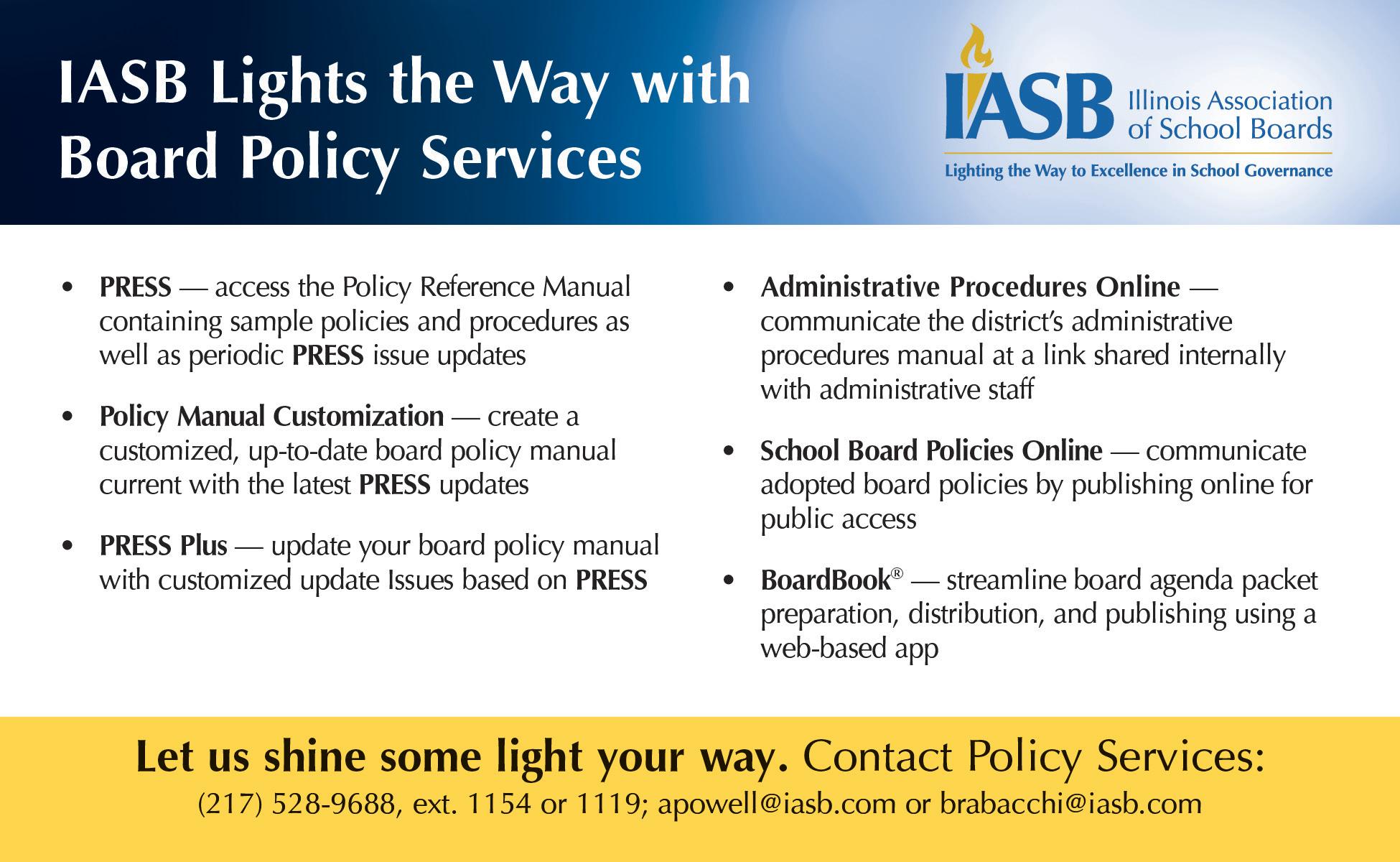
The Healthy, Hunger-Free Kids Act of 2010 required the U.S. Department of Agriculture (USDA) to update federal nutrition standards for school meals. Schools participating in NSLP/SBP must meet standards in the areas of more fruits and vegetables, whole grains, calorie limits, sodium limits, limits on unhealthy fat, offering low-fat
and fat-free milk, and free water. In 2022, the USDA issued transitional nutrition standards for school years 2022-23 and 2023-24 to ease forthcoming requirements due to pandemic challenges. Of the survey respondents, almost all are moderately or seriously concerned regarding the availability of foods that will meet the standards, notably the Target 1A sodium limits (effective July 2023), and are also well accepted by students. Almost all also are concerned about possible mandates that all grains offered with school meals be whole-grain rich and about new limits on added sugar being considered.
Illinois is included in SNA’s Midwest Region, with Minnesota, Iowa, Wisconsin, Indiana, Michigan, and Ohio. The Midwest’s permeal charge for students was the
same as the national average for lunches, and slightly higher — by one or two cents — for breakfasts. In the Midwest, 62.3% reported raising school meal program prices, slightly more than the national average of 60.5%.
The School Nutrition Association (SNA) is a national, nonprofit professional organization representing 50,000 members who plan, prepare and serve healthy school meals. Excerpted and adapted with permission. Visit schoolnutrition.org/ to read the full report. The Illinois chapter of the SNA, with a mission of mission “to mentor our membership in the advancement of good nutrition for all children,” is at ilsna.net. Both offer resources to school nutrition personnel and information for governance teams.




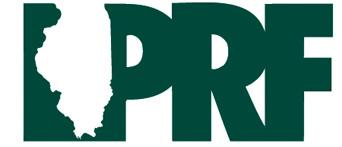



including an educational or enrichment activity.
What are the Nutrition Requirements for NSLP Lunches?
All NSLP lunches must meet federal requirements, though decisions about the specific foods to serve and the methods of preparation are made by local school food authorities. Information about the NSLP nutrition standards, along with technical assistance and guidance materials, may be found on the School Meals website.
How Can Children Qualify for Free or Reduced Price School Lunch?
Children may be determined “categorically eligible” for free meals through participation in certain Federal Assistance Programs, such as the Supplemental Nutrition Assistance Program, or based on their status as a homeless, migrant, runaway, or foster child. Children enrolled in a federally-funded Head Start Program, or a comparable state-funded pre-kindergarten program, are also categorically
of the federal poverty level are eligible for free meals. Those with incomes 130-185% of the federal poverty level are eligible for reduced price meals. Schools may not charge children more than 40 cents for a reduced price lunch. To see the current Income Eligibility Guidelines, please visit the NSLP website.
What are the Current Reimbursement Rates for Participating Schools?
School food authorities are reimbursed for meals based on children’s free, reduced price, or paid eligibility status. School food authorities that are certified to be in compliance with the program meal pattern receive an extra six cents for each lunch served. Additionally, schools in Alaska, Hawaii, and Puerto Rico are eligible for a higher reimbursement rate, due to the higher cost of food in those areas.
In addition to cash reimbursements, schools receive USDA Foods. States select USDA Foods for their schools from a list of foods
All NSLP lunches must meet federal requirements, though decisions about the specific foods to serve and the methods of preparation are made by local school food authorities.
eligible for free meals. Children can also qualify for free or reduced price school meals based on household income and family size. Children from families with incomes at or below 130%
purchased by USDA and provided through the NSLP. Schools can also receive bonus USDA Foods as they are available from surplus agricultural stocks. The variety of USDA Foods schools receive
depends on available quantities and market prices.
from FNS?
Through its Team Nutrition initiative, FNS provides training and technical assistance to school nutrition professionals to enable them to prepare and serve nutritious meals that meet the Program meal pattern requirements and appeal to children. The Team Nutrition Resource Library has web-based resources available to help children and school nutrition professionals understand the link between diet and health. State and local Program operators may request free printed copies of certain Team Nutrition materials at the NSLP website. FNS is also working to increase the availability of fresh produce in schools. The Fresh Fruit and Vegetable Program introduces children at participating low-income elementary schools to a variety of produce they otherwise might not have the opportunity to taste. In addition, through the Farm to School initiative, FNS helps school food authorities incorporate fresh, local produce into school lunch menus.
For more information about the NSLP, visit the program website at www.fns.usda.gov/nslp or the ISBE School Nutrition Programs page, www.isbe.net/Pages/ Nutrition-and-Wellness.aspx.
The U.S. Department of Agriculture Food and Nutrition Service administers the National School Lunch Program.
Reported by Nashwa Mekky
Panelists:
LLake Zurich High School is creating learning experiences beyond the traditional classroom. Students in grades 10-12 are invited to apply for internships to gain authentic, realworld experiences and explore career opportunities. These career exploration opportunities promote profound engagement and knowledge and help to inform future college and career decisions. They also establish strong partnerships between the school district and community businesses and organizations.
The program uses a lens of equity to place every student seeking an internship with a community partner. These internships give students valuable access and opportunities to break into the job of their dreams. To obtain these pathway endorsements, students must work a predetermined number of hours. While
most internships are not paid, some do provide modest stipends. These community partners also have the option to donate to a foundation that provides funding to students in the program. Some community partnerships are tapped for internship programs, including the Tech Campus, Community Boards, foundations, and local and small businesses.
The school has made gains in increasing the number of high school graduates prepared for postsecondary education and careers. As part of the Postsecondary Workforce Readiness Act and ISBE Career Pathway Endorsement (CCPE), students can build essential workforce competencies and earn credentials and opportunities for valuable early college credit. Another result of programs like the Pathways and Internship programs, Lake Zurich CUSD 95 has seen measurable improvements in the numbers of students needing remedial coursework in college.
endorsed teachers. Additionally, Lake Zurich High School is involved with Illinois P-20 which coordinates the efforts among school districts, postsecondary education institutions, employers, and other public and private organizations to address key barriers to the successful transition of Illinois high school students into college and careers.
The Pathways and Internship program at Lake Zurich High School has been a model for the community to provide their students with essential career pathways, dual credit, and internship opportunities.
ICYMI (In Case You Missed It) features panel reports from the 2022 Joint Annual Conference. Reporters are participants in the Educational Administration Intern program, a collaboration of IASB and the Illinois Council of Professors of Educational Administration.
Governor J.B. Pritzker signed Public Act 102-0917 in May 2022. This act provides dual-credit coursework that is approved for high school students. Northern Illinois University is one such partner that endorses teachers at Lake Zurich High School with a master’s degree or higher in the core content area they teach. Students are able to then secure dual credit when taking courses by the
Lake Zurich High School’s intentional work has gained support from its stakeholders. The district office’s collaboration with the community, colleges, and universities provides real-life opportunities for their students that truly provide them with skills and career readiness that set them apart from other high schools. The Pathways and Internship program has been so successful that the team is are reaching out to students in eighth grade to build relationships and create future pathways.



INDUSTRIAL APPRAISAL COMPANY
Building and fixed asset appraisals for insurance and accounting purposes. Oak Brook (630) 575-0280
Architects/Engineers
ARCON ASSOCIATES, INC.
Full service firm specializing in educational facilities with services that include architecture, construction management, roof and masonry consulting, landscape architecture, and environmental consulting. Lombard (630) 495-1900; www.arconassoc.com; sjmattes@arconassoc.com
BERG ENGINEERING CONSULTANTS, LTD.
Consulting engineers. Schaumburg (847) 352-4500
BLDD ARCHITECTS, INC.
Architectural and engineering services for schools. Decatur (217) 429-5105; Champaign (217) 356-9606; Bloomington (309) 828-5025; Chicago (312) 829-1987 www.bldd.com
CORDOGAN CLARK & ASSOCIATES
Architects and engineers. Aurora (630) 896-4678; www.cordoganclark.com; Tpowers@cordoganclark.com
DEWBERRY ARCHITECTS INC.
Architects, planners, landscape architecture, and engineers. Peoria (309) 282-8000; Elgin (847) 695-5840
DLA ARCHITECTS, LTD.
Architects specializing in preK-12 educational design, including a full range of architectural services, assessments, planning, feasibility studies, new construction, additions, remodeling, O&M and owner’s rep services. Itasca (847) 742-4063; www.dla-ltd.com; info@dla-ltd.com
DLR GROUP
Educational facility design and master planning. Chicago (312) 382-9980; dlrgroup.com; mengelhardt@dlrgoup.com
ERIKSSON ENGINEERING ASSOCIATES, LTD.
Site Planning/Studies, Civil Engineering, Tra c/Transportation, Landscape Architecture. Grayslake (847) 223-4804; Chicago (312) 463-0551; Mokena (708) 614-9720
FARNSWORTH GROUP, INC.
Architectural and engineering professional services. Normal (309) 633-8436
FGM ARCHITECTS, INC.
Architects. Chicago (312) 942-8461; Oak Brook (630) 574-8300; O’Fallon (618) 624-3364; St. Louis (314) 439-1601; Milwaukee, Wisconsin (414) 346-7282 www.fgmarchitects.com
GREENASSOCIATES, INC.
Architecture/construction services. Deerfield (847) 317-0852; Itasca, (847) 317-0852 Springfield
HEALY BENDER PATTON & BEEN ARCHITECTS
Architects/Planners. Naperville (630) 904-4300; www.healybender.com; dpatton@healybender.com
HURST-ROSCHE, INC.
Architecture, engineering, planning, and interior design. Hillsboro (217) 532-3959; East St. Louis (618) 398-0890; Marion (618) 998-0075; Springfield (217) 679-1671; www.hurst-rosche.com
JMA ARCHITECTS
Full service professional design firm specializing in K-12 educational design, construction management, strategic/ master planning, health/life safety compliance, building commissioning, and interior space design. South Holland (708) 339-3900; www.jmaarchitects.com; allison@jmaarchitects.com
KLUBER ARCHITECTS + ENGINEERS
Building design professionals specializing in architecture, mechanical, electrical, plumbing, structural, and fire protection engineers. Batavia (630) 406-1213
IASB Service Associates are businesses which o er school-related products and services and which have earned favorable reputations for quality and integrity. Only after careful screening is a business firm invited to become a Service Associate.
To learn more about IASB Service Associates membership, visit www.iasb.com or contact IASB at bkusturin@iasb.com
LARSON & DARBY GROUP
Architecture, engineering, interior design, and technology. Rockford (815) 484-0739; www.larsondarby.com; snelson@larsondarby.com
LEGAT ARCHITECTS, INC.
Architectural and educational planners who specialize in creating e ective student learning environments. Gurnee (847) 622-3535; Oak Brook (630) 990-3535; Chicago (312) 258-9595; www.legat.com; jboyce@legat.com
PCM+DESIGN ARCHITECTS
Provide a full range of architectural services including facility and feasibility studies, architectural design, construction consulting, and related services. East Peoria (309) 694-5012; www.PCMPLUSD.com; whelmick@pcmplusd.com
PERFORMANCE SERVICES, INC.
An integrated design and delivery engineering company serving the design and construction facility needs of K-12 schools. Schaumburg (847) 466-7220
PERKINS AND WILL
Architecture, educational planning, programing, master planning, re-referendum services.
Chicago (312) 755-0770 mark.jolicoeur@perkinswill.com; aimee.eckmann@perkinswill.com; rick.young@perkinswill.com
RICHARD L. JOHNSON ASSOCIATES, INC.
Architecture, educational planning. Rockford (815) 398-1231; www.rljarch.com
STR PARTNERS
Architectural, interior design, planning, cost estimating, and building enclosure/ roofing consulting.
Chicago (312) 464-1444
STUDIOGC ARCHITECTURE + INTERIORS
StudioGC is passionate communityminded partner, committed to creating imaginative and well-designed facilities. StudioGC o ers innovative planning, programming, architectural, interior design, and cost estimates.
Chicago (312) 253-3400
TRIA ARCHITECTURE
An architectural planning and interior design firm that provides services primarily to school districts in the Chicagoland area with an emphasis on service to their clients, and their communities.
Burr Ridge (630) 455-4500; www.triaarchitecture.com
WIGHT & CO.
A fully integrated design, engineering, and construction firm that partners with education leaders to create progressive, inspiring, and sustainable learning environments, while helping to manage risk and provide accountability in the delivery of work. Darien (630) 969-7000
WOLD ARCHITECTS AND ENGINEERS
Specializing in Pre-K-12 educational design including master planning, sustainable design, architecture, mechanical and electrical engineering, quality review, cost estimation and management.
Palatine (847) 241-6100
BOLLER CONSTRUCTION CO., INC.
Construction Manager and General Contractor specializing in building and renovating schools.
Waukegan (847) 662-5566
CORE CONSTRUCTION
SERVICES OF IL., INC.
Professional construction management, design-build, and general contracting services. Peoria (309) 404-4700; COREconstruction.com; mikaylavincent@coreconstruction.com
F. H. PASCHEN
A general/construction manager with extensive experience in new construction and renovation of educational and institutional facilities in the public/private sectors. Chicago (773) 444-1525; www.fhpaschen.com; aizzi@fhpaschen.com
FREDERICK QUINN CORPORATION
Construction management and general contracting. Addison (630) 628-8500
HOLLAND CONSTRUCTION SERVICES, INC.
Full service construction management and general contracting firm specializing in education facilities. Swansea (618) 277-8870
IHC CONSTRUCTION COMPANIES LLC
IHC Construction Companies LLC is a full-service construction management firm that delivers new construction, additions, and renovations for School District clients on-time and within budget.
Elgin (847) 742-1516
INTERNATIONAL CONTRACTORS, INC. (ICI)
An award-winning construction management firm specializing in K-12 facilities. Our firm is currently partnering with eight Illinois School Districts on capital improvement projects. Oakbrook Terrace (630) 641-6852
NICHOLAS & ASSOCIATES, INC.
Construction management, general contracting, design and build. Mt. Prospect (847) 394-6200 info@nicholasquality.com; nickjr@nicholasquality.com
PEPPER CONSTRUCTION COMPANY
Construction management and general contracting services. Barrington (847) 381-2760; www.pepperconstruction; jripsky@pepperconstruction.com
POETTKER CONSTRUCTION COMPANY
Specializing in construction management, design/build, construction consulting services, and energy solutions for education clients.
Breese (618) 526-7213; www.poettkerconstruction.com
RUSSELL CONSTRUCTION COMPANY, INC.
Russell provides successful, knowledgeable construction management and contracting services in the PreK-12 market from concept to completion and continuing care for your facility needs. Davenport, Iowa (563) 459-4600; www.russellco.com; sbaumann@russellco.com
SERVPRO TEAM WOLFE
Servpro Team Wolfe specializes in the cleanup and restoration of commercial properties after a fire, smoke or water damage. Assist schools in developing a recovery plan to put things back to preloss condition quickly and e ectively.
E ngham (314) 502-1337
S.M. WILSON & CO.
Provides construction management and general construction services to education, healthcare, commercial, retail, and industrial clients. St. Louis (314) 645-9595; www.smwilson.com; kristyn.newbern@smwilson.com; amanda.bohnert@smwilson.com
TRANE
HVAC company specializing in design, build, and retrofit. Willowbrook (636) 305-3600
COMPUTER INFORMATION CONCEPTS, INC.
Infinite Campus student information System and Finance Suite, and Tableau Data Visualization/Analytics. Greeley, Colorado (312) 995-3342
EDMENTUM
We provide fully digital curriculum and assessment tools for educators to utilize in K-12 classrooms to establish blended and personalized environments and advance student learning. Bloomington, Minnesota (952) 832-1570
COMMON GOAL SYSTEMS, INC.
We o er cloud-based software solutions for student information management, student registration, state reporting, financial management and payroll, parent communication, scheduling, gradebooks, report cards, and more. Elmhurst (630) 592-4200; www.common-goal.com
EOSULLIVAN CONSULTING
Illinois-based EOSullivan Consulting has developed a proven process the helps school districts with community engagement, survey research, messaging, informational campaigns and referendums. Libertyville (815) 353-1991
ALPHA CONTROLS & SERVICES, LLC
We deliver energy cost justified solutions that make the learning environment comfortable, secure, and e cient. Rockford, Springfield, Champaign (815) 227-4000; www.alpaacs.com; jasonv@alphaacs.com
VEREGY
Dedicated to assisting K-12 education meet the challenge of providing healthy, safe, and educational appropriate learning environments.
St. Louis (636) 230-0843; Chicago (773) 633-0691; veregy.com; bsmith@veregy.com
ENERGY SYSTEMS GROUP
A comprehensive energy services and performance contracting company providing energy, facility and financial solutions. Itasca (630) 773-7201; jcohn@esg.email
GRP MECHANICAL CO., INC.
Renovating buildings through energy savings performance contracting to provide the best learning environment. HVAC, plumbing, windows, doors, and mechanical services.
Bethalto (618) 779-0050
IDEAL ENVIRONMENTAL ENGINEERING, INC.
Asbestos and environmental services. Bloomington (309) 828-4259
ILLINOIS ENERGY CONSORTIUM
Sells electricity and natural gas to school districts, colleges, and universities. DeKalb (815) 753-9083; www.ILLec.org; hwallace@iasbo.org
ENGIE SERVICES U.S.
Turnkey partnership programs that enable K12 school districts in Illinois to modernize their facilities; increase safety, security and e ciency; reduce operations costs; and maximize the lifespan of critical assets. Chicago (312) 498-7792; sharon.uslan@engie.com
RADON DETECTION SPECIALISTS
Radon measurements in elementary, middle, and high schools, as well as all DCFS licensed spaces. We service the entire state of Illinois. Westmont (630) 325-4443 or (800) 244-4242
BERNARDI SECURITIES, INC. Municipal bond specialty firm; o ers a full range of school bond underwriting services, including capital needs financing and debt refinancing. O’Fallon (618) 206-4180; Peru (815) 587-8972; Chicago (312) 281-2014; jvezzetti@bernardisecurities.com
BMO HARRIS BANK
BMO Harris Bank’s experienced specialists can help you build a sound strategy to help close budget gaps, manage day-to-day cash flow and maximize your resources. Chicago (312) 461-7895
EHLERS AND ASSOCIATES
School bond issues; referendum help; financial and enrollment studies. Roseville, Minnesota (312) 638-5250; www.ehlers-inc.com; tolszewski@ehlers-inc.com
GORENZ AND ASSOCIATES, LTD.
Auditing and financial consulting. Peoria (309) 685-7621
ICE MILLER, LLP
Nationally recognized bond counsel services. Chicago (312) 726-7127
KINGS FINANCIAL CONSULTING, INC.
Municipal bond financial advisory service including all types of school bonds; school referenda, county school sales tax; tax revenue forecasts/projections.
Monticello (217) 762-4578
SPEER FINANCIAL, INC.
Financial planning and bond issue services. Chicago (312) 346-3700; www.speerfinancial.com; dphillips@speerfinancial.com; rmckenzie@speerfinancial.com
STIFEL
Full service securities firm providing investment banking and advisory services including strategic financial planning; bond underwriting; referendum and legislative assistance.
Edwardsville (800) 230-5151; noblea@stifel.com
WINTRUST FINANCIAL
Financial services holding company engaging in community banking, wealth management, commercial insurance premium financing, and mortgage origination. Rosemont (630) 560-2120
ACCURATE BIOMETRICS
Live scan fingerprinting for Illinois and FBI background checks. Live scan system sales and placement. Managed services for data security and compliance. Itasca.
BUSHUE HUMAN RESOURCES, INC.
Human resource, safety and risk management, and insurance consulting. E ngham (217) 342-3042; www.bushuehr.com; steve@bushuehr.com
Insurance
THE SANDNER GROUP Insurance program management, marketing & claims services for workers’ compensation, property & liability. Chicago (800) 654-9504
EDUCATIONAL ENVIRONMENTS BY FRANK COONEY COMPANY, INC. Furniture for educational environments. Wood Dale (630) 694-8800; www.frankcooney.com; gregory@frankcooney.com
Other
ECRA GROUP
Superintendent searches, board and superintendent workshops. Schaumburg (847) 318-0072
GRAND CANYON UNIVERSITY
Grand Canyon University is committed to elevating education and o ers degree programs, as well as continuing education courses for aspiring teachers, current educators, administrators and policymakers. Phoenix, Arizona.
Continued from page 34
George “Bud” Howard Thompson, civic leader, artist, businessman, politician, poet, volunteer, past president of the Illinois Association of School Boards, and longtime school board member, has died at the age of 92.
Thompson was born in Prophetstown and educated in its community schools. He attended Augustana College and the University of New Mexico at Taos to study art. He once related that his childhood was not easy, and he found an oasis in drawing pictures. His drawings are featured on the walls of IASB’s offices.

He owned and managed George Thompson & Son Livestock and Trucking company for 40 years. He was the literal mayor of Prophetstown for eight years, and a figurative mayor for a lifetime.
He was a longtime member of the school board for Prophetstown-Lydon CUSD 3. He attended over 50 Joint Annual Conferences. He was elected IASB president from 1975 to 1977 and served on the “Committee of 21” for the National School Boards Association. In 1981, he was appointed to the Illinois State Board of Education.

During IASB’s Centennial Celebration in 2013, Thompson was quoted as saying, “Remember, the most important skill to being an effective school board member is the ability to listen and learn.”
In 1977, at the conclusion of his two-year term as IASB President, Thompson noted in a letter to membership that “The success of an organization depends on the delicate balance between the lay leadership and the professional staff of the Association. Neither should dominate. We have a good balance now. Preserve it. … The ultimate “test” of our activities is not how local boards fare or how our Association rates, but rather, how our students benefit. Because we’re not dealing with a product
or clients or print-outs. We’re dealing with human lives, dealing with the future … future parents, future leaders.
“Our very existence depends on our ability to do our job … to provide our students with the best possible educational opportunity.”
In late 2020, at the height of the coronavirus pandemic and a year of political divisiveness and racial unrest, Thompson reached out to the Illinois School Board Journal and encouraged the public education community to bring hope, unity, and determination to recovery. At about that time, Thompson was busy repairing a mural in Tampico. He was the creator, overseer, and guardian of many murals, including the Ronald Reagan Mural, also in Tampico.
His obituary opens, “To know Bud was to love him.” He is survived by his wife of 73 years, Shirley Van Damme; their two children, Mark (Lorraine) Thompson and Becky Lambert; four granddaughters: Sara (John) Whitbeck, Andrea (Greg Ruff) Thompson, Allison (Ernie) Stone, Hillary (Joe) Burmeister; and nine great-grandchildren.
His wisdom and kindness will be remembered fondly by his family, friends, and communities, including the IASB Board of Directors, members, and staff.
Mary Atteberry, 72, died July 24, 2023. She had served on the Deland-Weldon CUSD 57 Board of Education.
Leonard F. Becker, 90, died June 24, 2023. He was a longtime history teacher and a past member of the school board for Mundelein HSD 120.
Paula Boudreau, 90, died July 13, 2023. She was a past member of the Bourbonnais SD 53 Board of Education.
William Donald “Don” Brinegar, 92, died July 24, 2023 He was a former member of the Paxton school board in Ford County.
Sally Ann Burmeister, 78, died June 11, 2023. She was a mentor to middle schoolers and a past member of the school board for Woodstock CUSD 200.
Philip Nels Dahl, 76, died July 20, 2023. He had served on the Emmons SD 33 Board of Education.
Glenn R. Fanter, 86, died June 3, 2023. He was a member and eight-year president of the Easton school board in Mason County.
Howard P. Gallois, 82, died July 3, 2023. He was a longtime school psychologist and a basketball official. He was an eight-year member of the school board for Sparta CUSD 140.
Dennis Gillan, 62, died July 21, 2023. He was a member of the school board for Cherry Grade School in Bureau County.
Terrance “Terry” Groves, 75, died July 15, 2023. He was director of Emergency Management and Zoning for Stephenson County and a member of the Freeport SD 145 school board.
Margaret (Peg) Hall, 95, died June 3, 2023. She was a past member of the Hinsdale CCSD 181 Board of Education.
David Merrill Hamilton, 75, died June 13, 2023. He was a member of the board for Ogden Grade School in Champaign County.
Gordon Keith Hankins, 98, died July 24, 2023. He was a longtime member and president of the Waverly CUSD 6 Board of Education.
Terry Heinz, 81, died June 15, 2023. He was a past member of the Argenta-Oreana CUSD 1 school board.
Burton J. Hess, 70, died June 10, 2023. He was a 13-year member of the school board for Seneca CCSD 170.
Charles Henry Kessler, 97, died July 20, 2023. He had served on the school board for Mt. Carroll schools in Carroll County.
Donald James Knudson, 94, died June 3, 2023. He served on the school board for Marseilles ESD 150.
Ronald “Ron” Martin, 84, died June 20, 2023. He served as a member of the Massac CUSD 1 Board of Education.
Edwin L. McLaughlin, 82, died July 2, 2023. He was a past member of the school board for Murphysboro CUSD 186.
James “Jim” E. Meyer, 89, died June 13, 2023. He was an auctioneer for 55 years and a member of the Somonauk CUSD 432 school board.
Robert Walter Milnichuk, 77, died June 21, 2023. He had served on the Hononegah CHSD 207 Board of Education.
Barrett R. Peterson, 78, died July 16, 2023. He served on the school board for CCSD 21 (Wheeling) for 12 years including nine as president.
Milton “Mick” E. Puckett, 90, died July 2, 2023. He was a past member and president of the school board for McClellan CCSD 12.
Russell Wayne Rhodes, 88, died July 7, 2023. He served on the Hillsboro CUSD 3 Board of Education.
Patty J. Schwass, 90, died June 13, 2023. She was a teacher for 20 years and served on the boards for Monmouth-Roseville CUSD 28 and Carl Sandburg College.
Donald Sofolo, 82, died July 20, 2023. He was a past member of the school board for Dixon Unit SD 170.
Alvin Lee Sondergaard, 92, died June 5, 2023. He was a past member of the Mokena SD 159 Board of Education.
George Howard “Bud” Thompson, 92, died July 5, 2023. He was a longtime member of the Prophetstown-Lydon-Tampico CUSD 3 school board and a past president and member of the IASB Board of Directors (see page 33).
Leonard Waldhoff, 80, died June 18, 2023. He was a member of the school board for Beecher City CUSD 20.
Carol Ann Walz, 84, died June 28, 2023. She was a past member and president of the Belleville SD 118 Board of Education.
John David Ward, 79, died June 1, 2023. He had served on the Sycamore CUSD 427 school board.
Bill Williams, 88, died June 14, 2023. He was a member of the Enfield school board in White County.
Samuel Albert Williamson, 89, died April 11, 2023. He was a past member of the Iroquois Co CUSD 9 Board of Education.
Continued on page 33.
“When children are hungry, they are typically less energetic, more agitated, and lack the ability to focus. As adults we are the same way — then think about putting yourself back in the classroom. A student who faces hunger may struggle with the SEL core competencies, which include interacting with others and maintaining self-control. … We know that school-based nutrition options … translate into better student academic achievement. However unfortunately some children may feel social pressure from their peers which would prevent them from taking advantage of the free and reduced meals available at school.”
— Topaz Arthur, Manager, Education and School Food Partnerships, No Kid Hungry Campaign, “Food Insecurity and Public Education” webinar, Consortium of State School Boards Associations, June 2023

“The Galesburg Community Foundation’s Hunger Collaborative engages non-profits in a new approach to reducing hunger. … It’s both an outgrowth of what local organizations were already doing during the COVID-19 pandemic to keep the community fed, and an alliance of those working directly and indirectly in food assistance to find lasting solutions to the hunger problem. ‘What we have decided is a good use of resources is not how we make sure people are fed. ... But we’ve changed the conversation to what causes people to be hungry and ways in which we can invest in those root causes of hunger,’ said Josh Gibb, CEO and president of the Galesburg Community Foundation.”
— “Addressing the root causes of food insecurity,” by Jane Carlson, Tri States Public Radio, July 25
“Cairo Illinois, like many other places, faced the challenge of being a food desert. Limited access to fresh produce and healthy food choices created significant hardships for our community. But we didn’t give up … Our cooperative is driven by the belief that everyone deserves access to affordable, high-quality food. We have come together, united by a shared vision, to address the food scarcity issues that affected Cairo for far too long. … Rise Community Market is not just a grocery store — it’s a place where community thrives. As a member-owned cooperative, our community is at the heart of everything we do. We believe that by working together, we can build a more resilient and equitable food system.”
— “Who We Are,” Rise Community Market, 2023
2921 Baker Drive
Springfield, Illinois 62703-5929
Address Service Requested
